calsfoundation@cals.org
Arkansas Mounted Rifles [Civil War]
After Arkansas seceded from the Union on May 6, 1861, state troops were mustered into the Confederate army in early July. Among them were two regiments, the First and Second Arkansas Mounted Rifles. These two regiments were formed into a brigade of Arkansas units under the command of Brigadier General Ben McCulloch, who oversaw the organization of these two special regiments at a rendezvous point near Bentonville (Benton County). He intended to use the Arkansas Mounted Rifles as a unique battalion that could not only ride with regular cavalry on horseback but also dismount and fight as infantry. McCulloch also felt that the Arkansas Mounted Rifles would make excellent scouts, given their familiarity with the territory. Their duties in the Civil War, however, carried them into action in several pivotal battles of the war in Mississippi, Tennessee, Kentucky, Georgia, and as far east as North Carolina.
On August 10, 1861, at the Battle of Wilson’s Creek (also known as the Battle of Oak Hills) in Missouri, the Second Arkansas Mounted Rifles, organized under the command of Colonel James McIntosh, saw action on the Confederate right when they jumped a fence and drove off an attack by Federal troops under General Franz Sigel, capturing Sigel’s cannons in the process. The First Arkansas Mounted Rifles, originally organized in Little Rock (Pulaski County) on June 16, 1861, by future governor Colonel Thomas J. Churchill, were also in the thick of this fight, and Federal troops were pushed back and forced to retreat to Springfield, Missouri. In late December 1861, James McIntosh and the Second Arkansas Mounted Rifles participated in driving off a contingent of Federal Indian forces near present-day Skiatook, Oklahoma. Afterward, Confederate forces, including the First and Second Arkansas Mounted Rifles, wintered near Van Buren (Crawford County).
The Second Arkansas Mounted Rifles were again dismounted and saw action on the first day of the Battle of Pea Ridge, March 7, 1862, while the First Arkansas Mounted Rifles did not; neither participated in the fighting the following day. With the Confederates repulsed and McCulloch and McIntosh killed, General Earl Van Dorn retreated back south, where he reorganized McCulloch’s Arkansas Division, including the Arkansas Mounted Rifles, as the First Division under General Price. The First and Second Arkansas Mounted Rifles were listed as part of “McIntosh’s Cavalry” in the Fourth Brigade of the First Division.
Farther east, Union forces were pressing into southern Tennessee. Van Dorn was ordered to bring his army east to join up with Confederate forces under Confederate generals P. G. T. Beauregard and Albert Sidney Johnston. Van Dorn’s forces did not arrive in time to participate in the bloody Battle of Shiloh (April 6–7). The trip east was slow-going, and the division to which the Arkansas Mounted Rifles were attached only arrived in Des Arc (Prairie County) in early April. As forage for horses was scarce, the Arkansas Mounted Rifles were dismounted at Des Arc and fought as infantry for the rest of the war. By April 11, Van Dorn’s forces finally arrived at Memphis, Tennessee, but Confederate forces had been defeated at Shiloh four days earlier. From Memphis, Van Dorn’s army made its way to Corinth, Mississippi, and was incorporated into Beauregard’s army. On May 9, Beauregard ordered an attack on the Federal left near Farmington, Mississippi. Both regiments of the Arkansas Mounted Rifles participated in this action, but the Confederates were unable to move Halleck’s troops from the field. The First and Second Arkansas Mounted Rifles were soon thereafter assigned to the Second Division of General Braxton Bragg’s Army of the West, commanded by Major General John Porter McCown.
On July 21, Bragg moved half his army to Chattanooga, Tennessee, to begin his invasion of that state and Kentucky, leaving the other half in central Mississippi under Van Dorn and General Sterling Price. During what came to be called the Kentucky Campaign, the Arkansas Mounted Rifles participated in the battles at Richmond and Perryville before Bragg was forced to retreat back into eastern Tennessee in October 1862. While encamped in the Cumberland Gap, the Second Arkansas Mounted Rifles’ commander, Colonel Harris Flanagin, was elected in absentia by Confederate Arkansans to be the seventh governor of Arkansas. Flanagin resigned his commission on October 25 and was replaced by Lieutenant Colonel James A. Williamson.
In November, Bragg moved his forces to strategic positions around Murfreesboro, Tennessee. On December 31, 1862, these forces fought in the Battle of Murfreesboro. The First and Second Arkansas Mounted Rifles served in Brigadier General Evander McNair’s brigade on the Confederate left. Southern forces were unable to dislodge Major General Rosecrans’s Federal troops. That night, Bragg withdrew his forces south to Tullahoma, Tennessee. The Arkansas Mounted Rifles spent the winter encamped near Shelbyville, Tennessee.
In May 1863, Confederate General Joe Johnston was ordered to Mississippi to take command of all Southern forces resisting the Federal siege of Vicksburg. The Arkansas Mounted Rifles, still assigned to McNair’s Brigade, were with him. Johnston spent the spring months skirmishing and trying to maneuver his army of 30,000 into a position best suited to assist Southern forces trapped in Vicksburg, but on July 4, 1863, Vicksburg surrendered to Federal forces under General Ulysses S. Grant. Johnston decided a counterattack was not feasible with his ill-equipped and hungry troops and thus evacuated to Brandon, Mississippi. McNair’s Brigade and the Arkansas Mounted Rifles remained there until September.
Meanwhile, General Bragg evacuated his position in Chattanooga, Tennessee, on September 8, 1863. McNair’s and Gregg’s brigades of Johnston’s army were ordered north to assist Bragg. The Arkansas Mounted Rifles arrived in time to participate in the bloody Battle of Chickamauga (September 19–20, 1863). Assigned to Confederate general James Longstreet’s corps on the Confederate left, the Arkansas Mounted Rifles and the rest of McNair’s Brigade were in the thick of the battle, and the brigade earned the title “The Star Brigade of Chickamauga” for their valor, though Southern forces were finally driven from the field. McNair’s Brigade and the Arkansas Mounted Rifles were sent back to Enterprise, Mississippi, where they spent the fall and winter.
On May 4, 1864, Union general William T. Sherman began his march to Atlanta, Georgia. The First and Second Arkansas Mounted Rifles, though now assigned to separate brigades in Joe Johnston’s Army of Tennessee, participated in the numerous engagements fought to stave off Sherman’s invading force. The Arkansas Mounted Rifles saw action at Dug Gap, Resaca, Kennesaw Mountain, Moore’s Mill, Peach Tree Creek, Atlanta, and Ezra Church, where the Second Arkansas Mounted Rifles lost all their field officers by the end of the battle. By August 31, Sherman had laid siege to Atlanta for nearly a month. The Battle of Jonesboro finally wore down Confederate resistance, and Atlanta fell on September 1. The Arkansas Mounted Rifles continued to fight with General John Bell Hood, who had replaced Johnston, in the disastrous battles of Franklin (November 30, 1864) and Nashville (December 15, 1864), in which the Army of Tennessee was all but annihilated.
The Arkansas Mounted Rifles were sent to fight once again under Johnston, this time in the Carolinas. Both the First and Second Arkansas Mounted Rifles were joined with the Fourth, Ninth, and Twenty-fifth Arkansas Infantry Regiments to form the First Arkansas Consolidated Mounted Rifles, though they still fought on foot. In their final battle, they served under Johnston against General Sherman at Bentonville, North Carolina, on March 19, 1865. The unit surrendered on April 26, 1865.
There were several notable Arkansans who fought with the Arkansas Mounted Rifles. Colonel Harris Flanagin served as the Second Arkansas Mounted Rifles commander until elected governor of Arkansas in October 1863. Thomas Spence, sheriff of Clark County, also enlisted in the Second Arkansas Mounted Rifles and was killed in the Battle of Murfreesboro. James Philip Eagle was deputy sheriff of Prairie County when war broke out and enlisted as a private in the Second Arkansas Mounted Rifles. Eagle went on to be elected the sixteenth governor of Arkansas in 1888. The First Arkansas Mounted Rifles was organized by Thomas James Churchill. He rose from the rank of colonel to major general by the end of the war and was in command of Arkansas Post (Arkansas County) when it fell to a Federal force on January 11, 1863. He was later elected the thirteenth governor of Arkansas in 1881.
For additional information:
Allen, Desmond Walls. First Arkansas Confederate Mounted Rifles. Conway, AR: D. W. Allen, 1988.
Christ, Mark K., ed. Getting Used to Being Shot At: The Spence Family Civil War Letters. Fayetteville: University of Arkansas Press, 2002.
“Field Officers and Staff, 2nd Arkansas Mounted Rifles, Confederate States of America.” Edward G. Gerdes Civil War Homepage. http://www.couchgenweb.com/civilwar/2ndmtf&s.html (accessed April 19, 2022).
Leeper, Wesley Thurman. Rebels Valiant: Second Arkansas Mounted Rifles (Dismounted). Little Rock, AR: Pioneer Press, 1964.
Piston, William Garrett. “‘When the Arks. Boys goes by they take the rags off the bush’: Arkansans in the Wilson’s Creek Campaign of 1861.” In The Die is Cast: Arkansas Goes to War, 1861, edited by Mark K. Christ. Little Rock: Butler Center Books, 2010.
Case D. Miner
University of Arkansas, Fayetteville

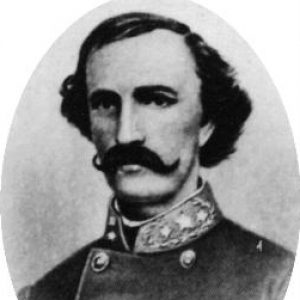 Thomas Churchill
Thomas Churchill 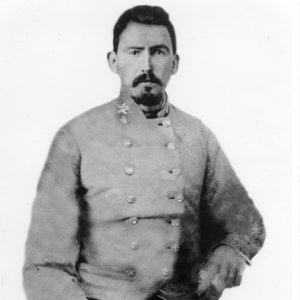 James Eagle
James Eagle  Harris Flanagin
Harris Flanagin  Colonel Robert W. Harper's Coat
Colonel Robert W. Harper's Coat  Colonel Robert W. Harper's Trousers
Colonel Robert W. Harper's Trousers  James McIntosh
James McIntosh 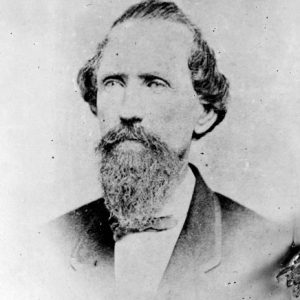 Evander McNair
Evander McNair 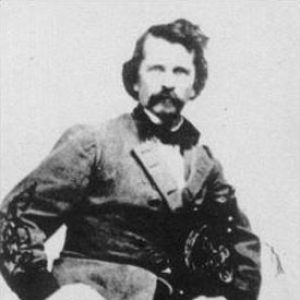 Earl Van Dorn
Earl Van Dorn 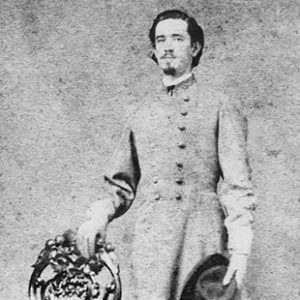 George W. Wells
George W. Wells 



Comments
No comments on this entry yet.